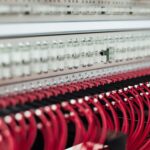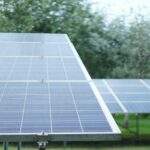
Akshat Rathi and Will Mathis of Bloomberg report on an Australian hydrogen startup.

- Hysata, an Australian startup, has raised $111 million from investors to scale up its efficient electrolyzer technology that can produce emissions-free green hydrogen from electricity at a lower cost by avoiding the formation of bubbles through a unique capillary action design.
- Capillary action, which is used by trees, is when a liquid in a narrow space can rise against the force of gravity.
- The company’s electrolyzer claims to achieve an energy efficiency of 95% in converting electricity to hydrogen, significantly higher than current commercial electrolyzers at around 75%, resulting in potential double-digit cost savings.
“The machines apply electricity to water and split the compound into its constituent elements of hydrogen and oxygen. It’s quite easy to make an electrolyzer at home that generates small quantities of hydrogen. All you need is two pieces of solid metal, some wire, salty water and a source of electricity.”
Read the full article here.








